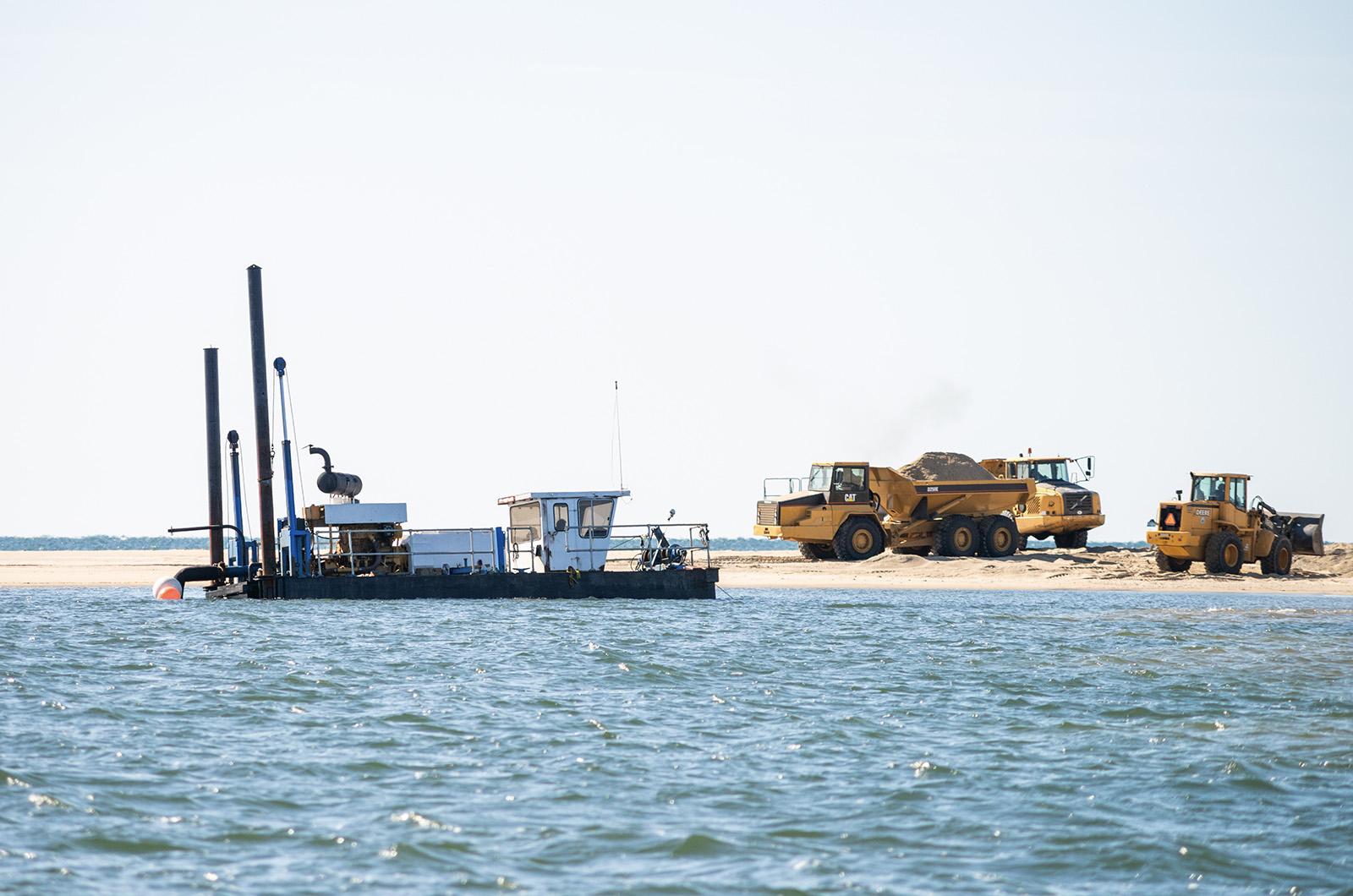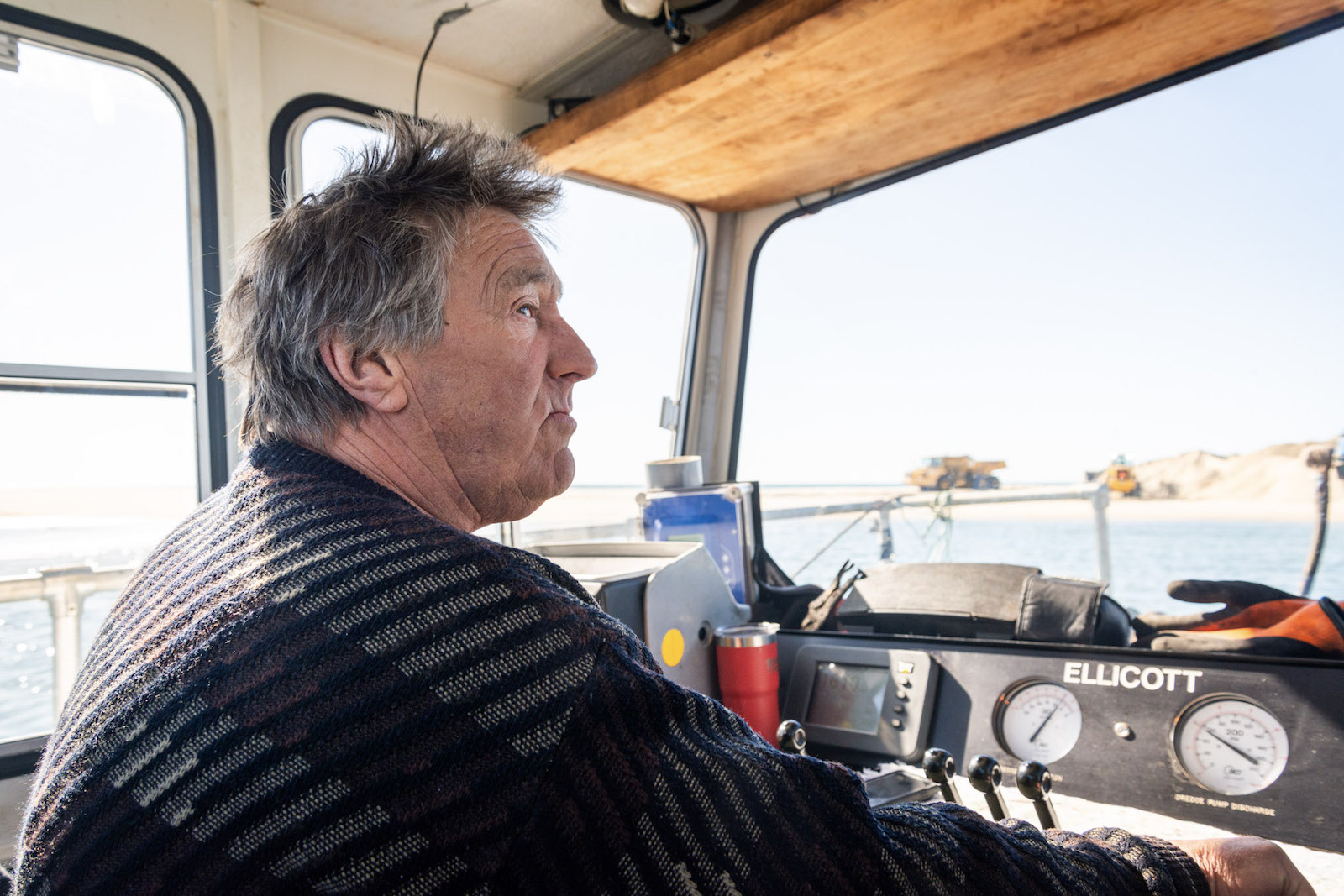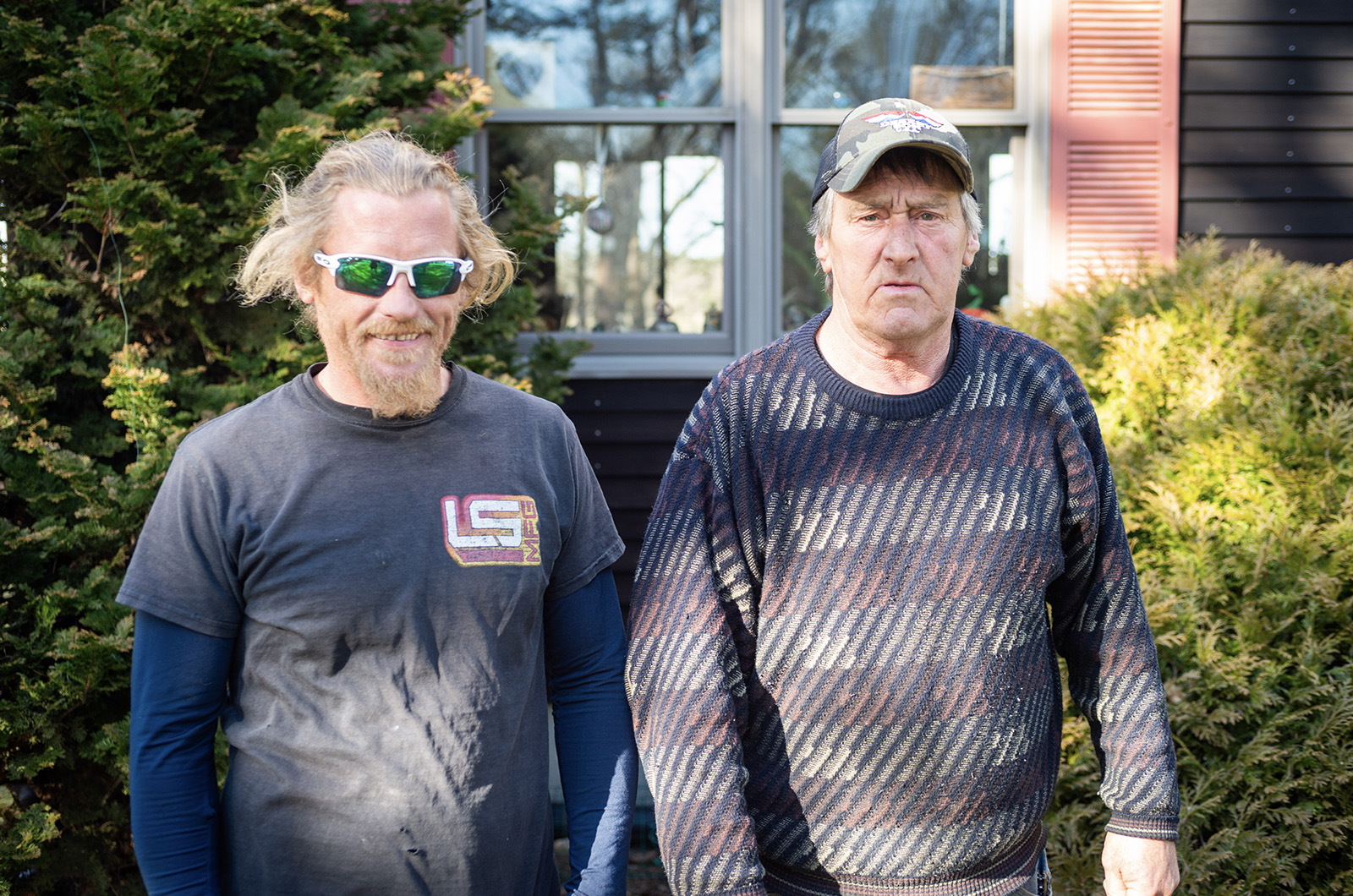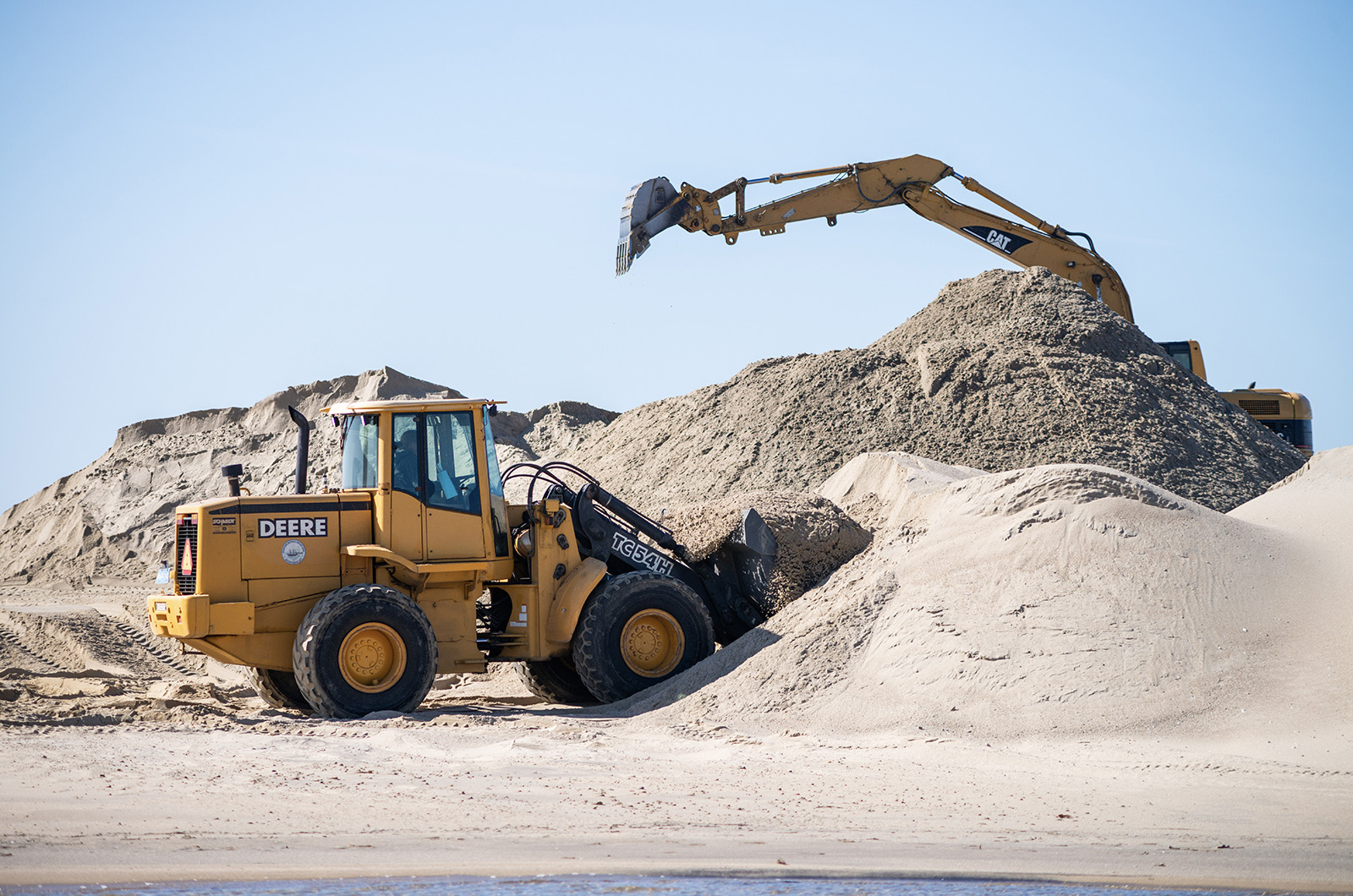Donnie Benefit trained his gaze toward two gauges on the console of his Edgartown dredging vessel: suction and discharge.
A loud and muscular industrial machine, the rusted blue vessel’s deck is dominated by its engine, sounding off a cacophony of whirring belts and twisted pipes. Towards the stern, towering metal spud poles provide stability as a dredge snout rapidly vacuums up pond-bottom slurry from Edgartown Great Pond, tilting the vessel to one side with its suction power.
In the closet-sized bridge where Mr. Benefit operates, the raw power of this machine is easily felt. By the end of a day of dredging, he said, his eyes are brought to tears by its vibration, and his brain is fried after hours at the helm.
Still, Mr. Benefit makes it look easy, his hands sliding over the console’s levers, buttons, switches and valves with the confidence that comes from a decade on the dredge and a lifetime on the water.
“The dredge goes no matter what, even if we have to row out there in kayaks with screws in our hand,” he said, in a recent interview with the Gazette where he extolled the virtues of the Edgartown-run dredge operation.
Mr. Benefit operates one of just two municipal-owned dredge vessels in the state, along with Barnstable County. The purchase of an Edgartown dredge in the mid-1990s has proved to be a major money-saver for the town. This year, the Edgartown parks department estimated it saved around $18 million by using locally dredged sand to restore the dunes at South Beach.
The dredge has also had a big impact on water quality, and waterway navigability for Island fishermen, since the operation began. Among the waterfront regulars who have worked on the dredge over the years, Mr. Benefit is perhaps its most passionate partisan.
“All I know is, I fished all my life, and without this dredge you would have lost a lot of fish in areas,” he said.
With a sailor’s vocabulary and a waterfront cynicism, Mr. Benefit is the image of an old-school Edgartown fisherman. He has shifted through a variety of fisheries over his decades-long career, now focusing on conch and occasionally soft shell clams. The role that the dredge has played in keeping the town’s shellfish fisheries viable, he said, is immeasurable.
“It’s all about getting water flow,” he said. “Stagnant water doesn’t grow things, it creates algae, nasty smelling things.”
One of the dredge’s primary duties, Mr. Benefit said, is to ensure that Edgartown’s coastal estuaries are kept clean via a steady ocean flow. The crew, which includes Mr. Benefit and foreman Greg Bettencourt, has already dredged the Cape Pogue Gut and Edgartown harbor this year, and are now finishing up work in the Edgartown Great Pond.
Though typically separated from the Atlantic by a thin strip of barrier beach, the Edgartown Great Pond is periodically “cut” to allow polluted brackish water to be exchanged with cleaner ocean water. But in order for that cut to be successful, Mr. Bettencourt said, the dredge crew has to dig a deeper channel in the pond ahead of time.
“The wash over sand creates a plume . . . so when the pond drops the foot [during the cut], water doesn’t pass,” he said, adding that accumulated sand in the pond can block off the cut before water is exchanged. To ensure that doesn’t happen, Mr. Bettencourt said, the dredgers pump out thousands of yards of sand ahead of time to clear the way. And once that sand is out of the water, it becomes a valuable commodity.
“I’m putting a dump truck on the beach right now every six-and-a-half minutes,” Mr. Benefit said. “I take it out, give it to [Greg], he builds beaches and roads.”
Sand has become an increasingly hot commodity on-Island, especially after a series of storms decimated the dunes at South Beach this winter. Importing it from the mainland goes for around $72 per cubic yard, making sand dredged on the Vineyard a money-making proposition for Edgartown. Sand sales for a private Cow Bay restoration project netted the town $800,000, Mr. Benefit said.
As if on queue a thick black pipe spewed forth a torrent of brackish sand slurry into a small crater beside the Atlantic. Dredge committee chairman Ed Handy, situated in his excavator, lowered and scooped up the sand, topping off a series of towering dunes.
Mr. Bettencourt, meanwhile, used his bucket loader to scoop sand from the dunes into dump trucks, headed for the ongoing restoration projects on South Beach and Norton Point. The town is looking to complete that nourishment project before shorebird season arrives and limits work on Norton Point this fall.
Time pressure due to conservation restrictions, Mr. Benefit said, is a common occurrence for the dredge.
“There’s a lot to go through before you can put the snout down and mine sand,” he said.
The town has to go through a complex permitting process to get dredge areas approved. Currently, Edgartown is also going through a process to add new permit areas down-harbor in Katama to improve shellfish grounds and gain access to more sand for restoration projects.
But despite his achievements during his years on the dredge, Mr. Benefit said the work is often just as humbling as it is rewarding.
“Mother nature, in a few seconds, she can move more sand than we can put down in a day,” he said.
The dredge crew admitted that fighting those natural trends is ultimately futile, and Mr. Benefit and Mr. Bettencourt doubt that Atlantic Drive will last much more than a decade.
The best thing to do, Mr. Benefit said, is not to fight, but to go with the flow.
“Mother nature, you just got to help her out. That’s how I look at it,” he said.










Comments (9)
Comments
Comment policy »